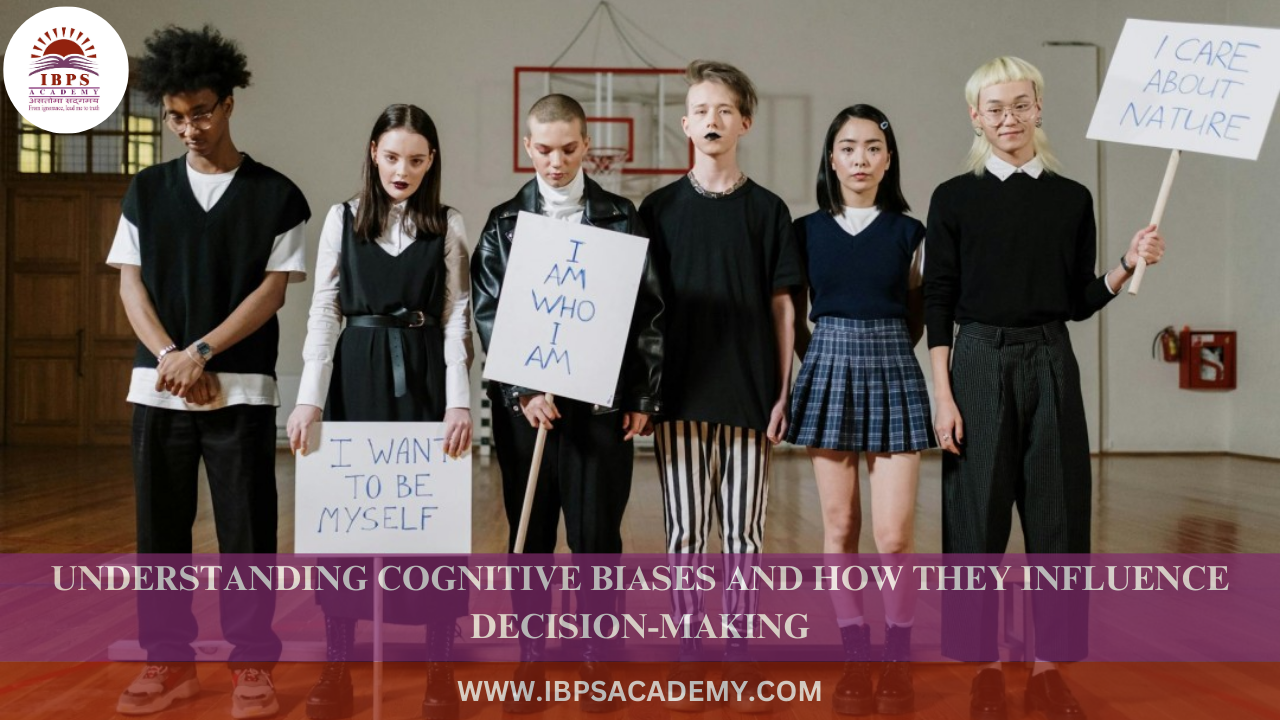

Cognitive biases are systematic patterns of deviation from rationality or good judgment. They occur when people process information in ways that consistently lead to incorrect conclusions or decisions. These biases often arise from the brain's attempt to simplify complex tasks, draw quick conclusions, or conserve cognitive energy, but they can lead to flawed decision-making. Here's an overview of how they work and how they impact decision-making:
There are numerous cognitive biases, each affecting different aspects of decision-making. Some of the more common ones include:
Confirmation Bias: The tendency to seek or interpret information in a way that confirms one's pre-existing beliefs or opinions. For example, someone who believes a particular political view might only read articles that support that view and disregard opposing information.
Anchoring Bias: Relying too heavily on the first piece of information (the "anchor") when making decisions. For example, if the first price of a product you see is $100, you might think a $75 price is a good deal, even if the product's true value is lower.
Availability Heuristic: The tendency to overestimate the likelihood of events based on their availability in memory. For instance, if you’ve recently heard about a plane crash, you might overestimate the danger of flying, even though statistically, it’s very safe.
Overconfidence Bias: The tendency for people to overestimate their knowledge, abilities, or predictions. For example, a person might think they can finish a project in half the time it would realistically take, leading to poor planning.
Framing Effect: The way information is presented affects decision-making. People are more likely to choose an option based on whether it’s framed as a loss or a gain. For example, people might choose a surgery with a 90% survival rate over one with a 10% mortality rate, even though the two options are essentially the same.
Cognitive biases influence decision-making in a variety of ways:
Judgment Errors: Biases distort our judgment, often leading us to make decisions based on flawed or incomplete information. For example, overconfidence bias can lead people to ignore risks or dismiss important data.
Emotional Influence: Many biases are linked to emotions. For instance, loss aversion (the tendency to prefer avoiding losses over acquiring gains) might lead people to make decisions that are emotionally driven, rather than rationally based on long-term benefits.
Group Dynamics: Biases can be amplified in group settings. Groupthink occurs when a desire for harmony or conformity in a group leads to poor decisions, as dissenting opinions are suppressed.
Risk Assessment: Biases influence how individuals assess risk. Availability heuristics and recency bias can make people overestimate the likelihood of rare but memorable events, like plane crashes or terrorist attacks, and underestimate more common risks, like car accidents.
Consumer Behavior: In marketing and consumer behavior, cognitive biases can be exploited to influence purchasing decisions. For instance, anchoring bias is often used in sales, where an initial high price is set for a product, followed by a discount, making the lower price seem like a better deal.
Being aware of cognitive biases is the first step in mitigating their impact on decision-making. Here are some strategies:
Critical Thinking: Constantly question assumptions and evaluate information from multiple sources to counteract biases like confirmation bias.
Seek Diverse Perspectives: In group decision-making, encourage diverse viewpoints and challenge groupthink by considering dissenting opinions.
Slow Down Decision-Making: Take time to reflect on decisions rather than making snap judgments. This helps reduce the influence of biases like overconfidence and anchoring.
Use Data and Evidence: Rely on objective data and empirical evidence rather than subjective judgment, especially when evaluating risks or making forecasts.
Be Aware of Emotional Triggers: Understand when emotions like fear, excitement, or pride are influencing your decisions and take steps to separate them from rational analysis.
In Personal Decisions: Cognitive biases can impact everyday choices, such as how we invest money, make health decisions, or even choose relationships. Recognizing and challenging biases can lead to better choices and more fulfilling outcomes.
In Business Decisions: Business leaders and organizations can fall victim to biases that lead to poor strategic choices, ineffective marketing, or poor hiring decisions. By training employees to recognize and mitigate biases, companies can make more objective, data-driven decisions.
Cognitive biases are a natural part of how we process information, but they can lead to poor decision-making if left unchecked. By understanding the various types of biases and actively working to counteract them, individuals and organizations can improve their judgment and make more informed decisions.
